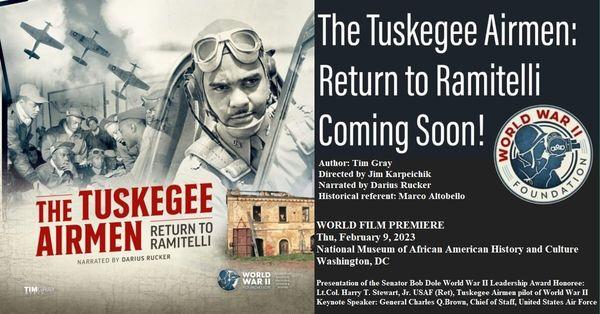
Tuskegee Airmen are best known as the first African American pilots to serve in the U.S. military. Flying P-39s, P-40s, P-47s, and P-51s defied any notion that black men lacked the ability to successfully pilot advanced fighter aircraft; in fact, their outstanding performance in World War II contributed to the racial integration of the armed forces in 1948. From their ranks came the top three generals in the African American Air Force. Other African American pilots preceded Tuskegee Airmen, but they were civilians or served in foreign air forces Eugene J. Bullard, the first African American military pilot, served in the French Air Service during World War I, for example, and John C. Robinson later served in the Ethiopian forces in 1930. Of the 992 Tuskegee Airmen who completed advanced flight training with the Tuskegee Army Air Forces, there were eight just a year ago; now that they are nearly a century old, their ranks are rapidly dwindling. Four died in 2022 - Charles McGee, Alexander Jefferson, William Rice and Christopher Newman - and another, Harold H. Brown, died in January 2023 As of this writing, only three of those who flew with the Red Tail P-51 Mustangs survive: Charles W. Cooper, George E. Hardy, and Harry T. Stewart Jr. The U.S. Army purchased its first military aircraft in 1909 and for the next 30 years blacks were not allowed to fly. An Army War College report published in 1925 reflected the Army's attitude at the time: it argued that blacks were inferior and should be restricted to subordinate positions. To be a pilot was to be an officer, and the Army of the time did not want black officers commanding white soldiers. The U.S. Navy and Marine Corps both had the same position. Actually, neither the Navy nor the Marine Corps had a black pilot until after World War II. The breakthrough came, during President Franklin D. Roosevelt in 1940, in which he sought an unprecedented third term. Roosevelt promised to train African American pilots in the U.S. Army Air Corps. After Roosevelt won the election in November, Roosevelt's War Department announced in January that the Army would train black pilots at Tuskegee, Alabama. In March, the 99th Pursuit Squadron (later renamed the 99th Fighter Squadron) was formed as the first black flying unit in the United States Army Air Corps. The squadron did not yet have qualified pilots, but they soon became so. They became known as the Tuskegee Airmen. Tuskegee was chosen for a number of reasons. Its climate allowed for more days of nice flying weather than airports farther north, and the Tuskegee Institute had already trained black civilian pilots there. The Leader urged that military pilots also be trained there. The War Department wanted to maintain separate flying units, and in Alabama, racial segregation was the norm. Instead of training at bases across the country, as white pilots did, African American pilots would have completed primary, basic, and advanced training only at Tuskegee. Nearly 1,000 African American men completed the course.